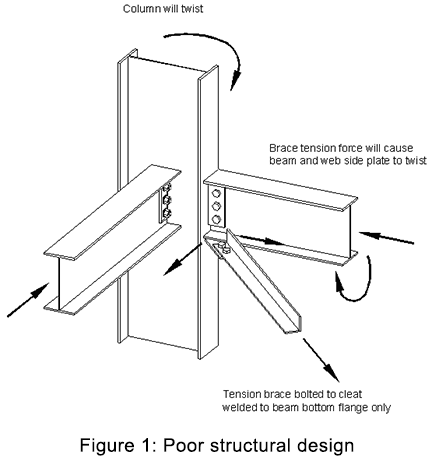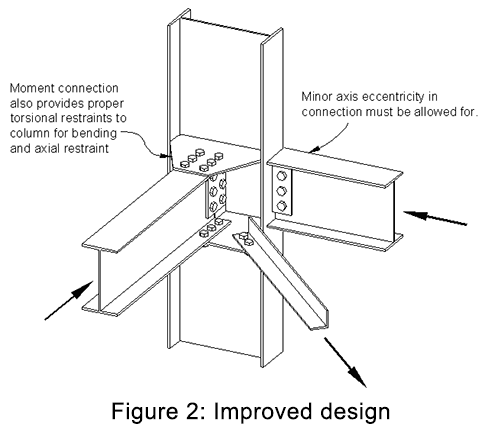Practice Advisory 4: Do sweat the 'small' stuff - Connection design and detailing
If you're a design engineer, you need to make sure the design and details of structural steel connections will satisfy the concept and transmitting loads between the main structural elements.
This information was confirmed as current in December 2016.
This Practice Advisory is issued as guidance information in accordance with section 175 of the Building Act 2004 and, if used, does not relieve any person of the obligation to consider any matter to which the information relates according to the circumstances of the particular case. This document is not a compliance document in terms of the Act and not a substitute for professional advice.
Issues of concern
If you're a design engineer, you need to make sure the design and details of structural steel connections will satisfy the concept and transmitting loads between the main structural elements.
The design and detailing of structural steel connections is not always being carried out in accordance with principles of statics, material behaviour and technical guidelines.
Incorrect design and construction of connections can seriously undermine the integrity of the structure.
Background
Connection details are a time-consuming part of design, but their correct design is vital in satisfying the design concept and transmitting loads between the main structural elements.
To assist in the design process a number of standard connection details are available that have been specifically designed for a number of common situations and loads. However, these standard connections are not always applicable and can be misinterpreted if left solely to steel fabricators and erectors to carry out.
Further information: NZS 3404 Steel Structures Standard; SCNZ Report 14:2007; Structural Guide Steelwork Connections; HERA Report R4-80, New Zealand Structural Steelwork Limit State Design Guides, Volume 1, especially Section 10; HERA Report R4-58, Manual of Standard Connection Details for Structural Steelwork; HERA Steel Design and Construction Bulletin Issue No. 78; Code of Practice for Structural Steelwork Documentation.
Don't
- use minimalist drawings that rely on the fabricators to work out construction details
- change or use substitute connection details without obtaining the consent of the design engineer
- allow eccentricities to occur at member intersections unless they cannot be avoided.
Do
- use standard detail types wherever possible
- spend the time necessary to design and draw exactly what is required in terms of connections. Look at every link in the chain
- carry out a constructability review of the design and drawings to ensure that the correct connection details are provided and can be fabricated
- ensure that any standard details used are appropriate for the design loads and the design concept
- ensure that connection details are sufficient to provide the required lateral buckling and twist restraint to column and beam members
- ensure that connection details are sufficient to provide the required lateral buckling and twist restraint to column and beam members
- ensure that connection details are sufficient to provide the required lateral buckling and twist restraint to column and beam members

